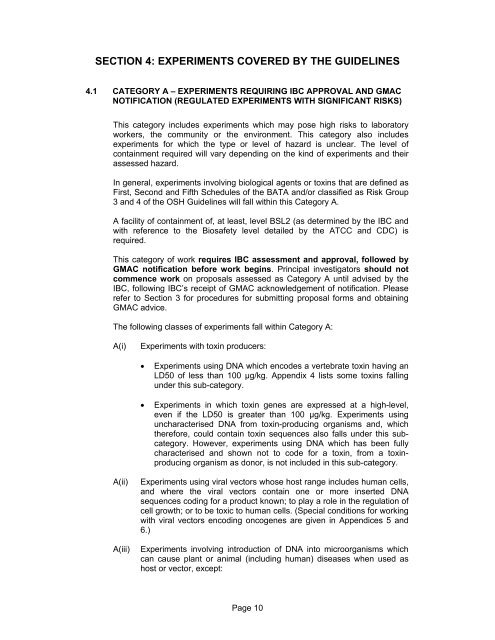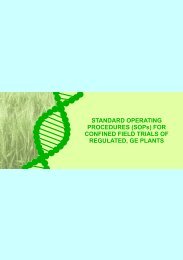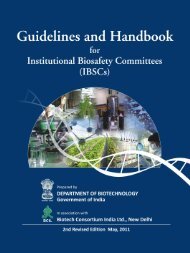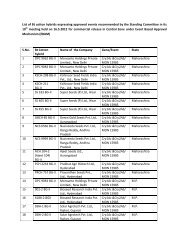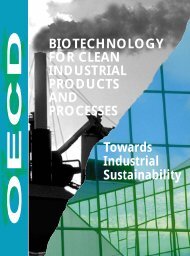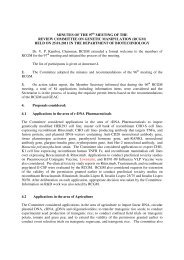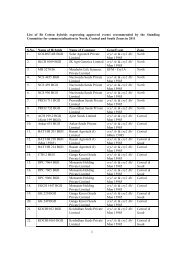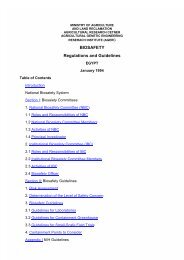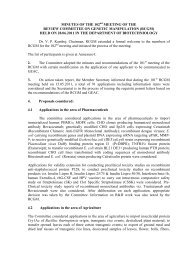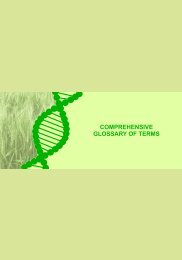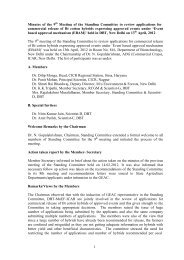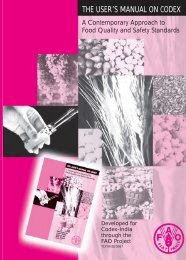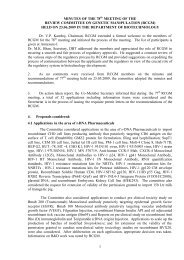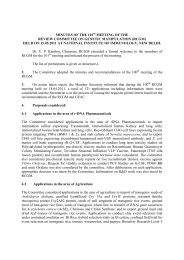Biosafety Guidelines For Research On Genetically Modified ...
Biosafety Guidelines For Research On Genetically Modified ...
Biosafety Guidelines For Research On Genetically Modified ...
Create successful ePaper yourself
Turn your PDF publications into a flip-book with our unique Google optimized e-Paper software.
SECTION 4: EXPERIMENTS COVERED BY THE GUIDELINES<br />
4.1 CATEGORY A – EXPERIMENTS REQUIRING IBC APPROVAL AND GMAC<br />
NOTIFICATION (REGULATED EXPERIMENTS WITH SIGNIFICANT RISKS)<br />
This category includes experiments which may pose high risks to laboratory<br />
workers, the community or the environment. This category also includes<br />
experiments for which the type or level of hazard is unclear. The level of<br />
containment required will vary depending on the kind of experiments and their<br />
assessed hazard.<br />
In general, experiments involving biological agents or toxins that are defined as<br />
First, Second and Fifth Schedules of the BATA and/or classified as Risk Group<br />
3 and 4 of the OSH <strong>Guidelines</strong> will fall within this Category A.<br />
A facility of containment of, at least, level BSL2 (as determined by the IBC and<br />
with reference to the <strong>Biosafety</strong> level detailed by the ATCC and CDC) is<br />
required.<br />
This category of work requires IBC assessment and approval, followed by<br />
GMAC notification before work begins. Principal investigators should not<br />
commence work on proposals assessed as Category A until advised by the<br />
IBC, following IBC’s receipt of GMAC acknowledgement of notification. Please<br />
refer to Section 3 for procedures for submitting proposal forms and obtaining<br />
GMAC advice.<br />
The following classes of experiments fall within Category A:<br />
A(i)<br />
Experiments with toxin producers:<br />
• Experiments using DNA which encodes a vertebrate toxin having an<br />
LD50 of less than 100 µg/kg. Appendix 4 lists some toxins falling<br />
under this sub-category.<br />
• Experiments in which toxin genes are expressed at a high-level,<br />
even if the LD50 is greater than 100 µg/kg. Experiments using<br />
uncharacterised DNA from toxin-producing organisms and, which<br />
therefore, could contain toxin sequences also falls under this subcategory.<br />
However, experiments using DNA which has been fully<br />
characterised and shown not to code for a toxin, from a toxinproducing<br />
organism as donor, is not included in this sub-category.<br />
A(ii)<br />
A(iii)<br />
Experiments using viral vectors whose host range includes human cells,<br />
and where the viral vectors contain one or more inserted DNA<br />
sequences coding for a product known; to play a role in the regulation of<br />
cell growth; or to be toxic to human cells. (Special conditions for working<br />
with viral vectors encoding oncogenes are given in Appendices 5 and<br />
6.)<br />
Experiments involving introduction of DNA into microorganisms which<br />
can cause plant or animal (including human) diseases when used as<br />
host or vector, except:<br />
Page 10


